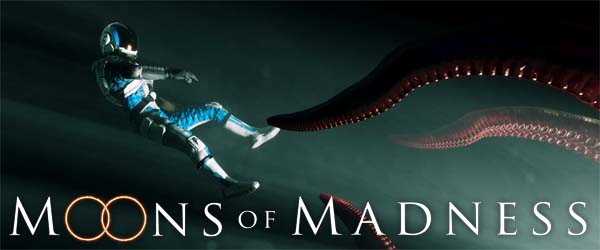
It's hard to make a good Lovecraftian horror game. The key to Lovecraft's horror was the mysterious intractability of his cosmic abominations. It wasn't just that they were ugly or deadly; the horror came from the realization that these monsters were part of a much greater cosmos that humans can barely comprehend, and that we are little more than ants to these god-like beings who could snuff us out of existence at a whim -- if they even cared enough about us to do so. In the century since Lovecraft wrote his stories, Lovecraft's monsters have become so iconic that Cthulhu is pretty much a universally-recognized, cliche monster along with the likes of Dracula and the Xenomorph. The closer a story adheres to Lovecraft's ideas, the more familiar it becomes, and the harder it is to create that sense of being overwhelmed with unfathomable knowledge that drives a person insane.
That is why I think that FromSoftware's Bloodborne is perhaps the best video game adaptation of Lovecraft's concepts (even though it is not a direct adaptation of any of his stories). Bloodborne's esoteric and arcane lore, and the indirect nature in which it communicates its backstory, actually does create that sense that the player is just a small piece of a much larger puzzle that you will never fully comprehend. And the difficult nature of the game means that the player certainly feels like you can be snuffed out of existence at any moment.
Moons of Madness isn't mysterious, or arcane, or particularly threatening. It's cliche and predictable to a fault.
Flatline
I saw almost every plot point coming from a mile away, and if you don't want spoilers, then I suggest you skip ahead to the next section. I didn't expect there to be a full-on underground lab complex akin to Resident Evil 2, but it wasn't something that came off as very surprising considering how telegraphed the corporate conspiracy "twist" was from the start. All the other twists, however, came off as rote and stale. The science experiment gone haywire, the relief ship crashing, the reveals about the protagonist's family history, the multiple betrayals ... none of it came off as even remotely surprising, and the whole game degraded to simply waiting for the next shoe to drop. The game isn't very long, but the predictable nature of its plot made it feel like it was dragging on for much longer than its six-ish hour playtime.
The secret lab was not a surprise and only distracted from the cosmic horror.
Worse yet, the corporate conspiracy stuff ended up distracting from, and drowning out, the Lovecraftian cosmic horror. The monsters don't feel mysterious because they're all the results of experiments being done at the request of the evil corporation. The Lovecraftian temple complex and "dreamers" fall flat because their existence is spoiled much earlier in the game. Heck, the other characters visit the temple and tell you all about it over the radio, while you're fumbling about the silly underground lab, so by the time you get to the temple, it's not mysterious at all. I think the point was to try to convey the awe and wonder of the NPC characters in the hopes that it would instill a sense of awe and wonder within the player, but all I could think was "I'd much rather be playing as those other characters right now!"
When all is said and done, I feel like Observation (despite not being directly inspired by Lovecraft's mythos) pulls off the cosmic horror shtick much better because its alien influences remain mysterious and intractable all the way through the end -- perhaps to that game's fault.
... [More]
942aeb04-c29d-447b-8525-5e4dcfd19326|0|.0
Tags:Moons of Madness, Steam, Rock Pocket Games, Dreamloop Games, Funcom, science fiction, horror, cosmic horror, H.P. Lovecraft, walking simulator, Mars, conspiracy
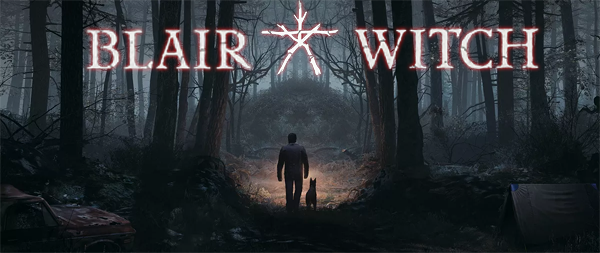
Blair Witch, as an intellectual property, is in a frustrating place similar to the Alien franchise. Both were innovative horror films that set numerous standards and conventions within their sub-genres, and which have been copied and ripped-off numerous times. Sci-fi games from Starcraft, to Metroid, to System Shock, to Dead Space have all taken heavy inspiration from Alien and Aliens. So much of the iconography of Alien and Aliens have been borrowed by these games, that when someone comes along with a game based on the Alien intellectual property, it's hard for that game to not feel like it's derivative of one (or all) of the myriad Alien impersonators.
the Blair Witch Project has similarly left a mark on the horror landscape. It single-handedly popularized the "found-footage" genre against the backdrop of a creepy, supernatural forest. Games such as Outlast, Alan Wake, and even Resident Evil VII all have a little bit of Blair Witch in their DNA. So when a game comes out that actually bears the "Blair Witch" name, it's kind of hard for it to stand out in the larger horror landscape.
Plenty of games (such as Outlast [LEFT]) have used tropes inspired by The Blair Witch Project.
This is the case with Lionsgate and Bloober Team's new Blair Witch game, exclusive to Microsoft platforms. Nothing that Blair Witch does feels particularly new or creative, even though most of the game's ideas are competently executed. Using a camcorder as a tool for navigation, exposition-delivery, and puzzle-solving feels pulled straight from Outlast or Resident Evil VII. Wandering through the woods and defeating monsters by pointing a flashlight at them gives me flashbacks to Alan Wake. Navigating the forest and occasionally picking up other people's trash also reminded me of Firewatch. Eventually, the whole game descends (rather predictably) into P.T. territory -- but, you know, without all the nuance or careful pacing that made P.T. so unnerving.
Who's a good doggy?
Blair Witch's most innovative feature is probably the dog companion (named Bullet), but even that feels pulled straight from Fallout 4. I probably would have been a bit more impressed if not for the fact that Bullet seemed to lose relevance as anything other than a monster compass, for a large chunk of the middle of the game. Without having healing items or ammunition or any other consumable supplies, the ability to send the dog out to find things feels like a sorely under-utilized mechanic.
Bullet is very well-introduced, and is integral to the early levels of the game. He finds clues for you, fetches key items, guides you to the next objective, and warns you of potential danger, all completely organically and without breaking immersion. But after a couple of hours, he just runs out of things to find and things to do. The puzzle shift away from using the dog, and more towards using the camera to do everything from manipulate the environment, to navigate mazes and looping paths, and even spotting monsters.
Your emotional support dog, Bullet, serves an integral role throughout the game.
... [More]
7a3b2c59-d35b-424f-a1cd-ecf04d6332bb|1|5.0
Tags:Blair Witch, Bloober Team, Lionsgate Games, The Blair Witch Project, Microsoft, XBox, windows, XBox Live, Steam, Good ol' Games, indie gaming, horror, found-footage, camera, forest, post-traumatic stress disorder, dog
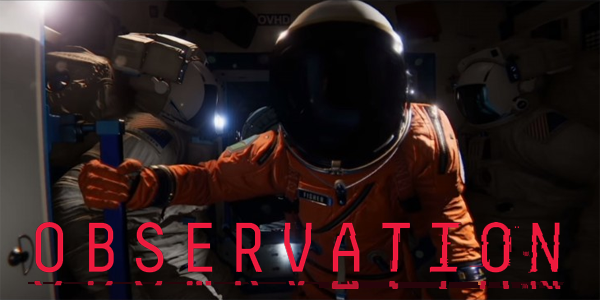
It's real refreshing to come across a science fiction game that isn't just about shooting aliens with laser guns or blowing up space ships. If you're in the market for a thoughtful, well-presented science fiction experience, then I highly recommend that you check out Observation. If you're also into horror, then even better, because this game definitely has some horror elements as well. They're much more subdued, but this game does do a fantastic job of creating a building sense of tension and intrigue as its over-arching mystery is slowly unfurled.
The gimmick here is that you play as a malfunctioning artificial intelligence on a near-future orbital research station. The game is presented as a sort-of found-footage narrative (think along the lines of the Apollo 18 horror movie) told entirely from the point of view of the on-board A.I. Something goes wrong, the crew are all missing and possibly dead, and you help the sole survivor try to find the remaining crew and piece together what happened to the station. Think along the lines of playing as the HAL 9000 from 2001: A Space Odyssey, or as Kevin Spacey's character in the [fantastic] movie Moon. You do this by jumping between different surveillance cameras (a la Five Nights at Freddy's, but, you know, with ambitions of being more than just a random jump-scare-generator). Through the cameras, you interact with various technology and station systems within your line of sight. You'll occasionally be asked questions or given commands by the surviving astronaut, and you chose how to respond.
You are an unreliable A.I.?
From the start, there's a certain degree of unreliable narrator going on. One of the very first actions that the game asks you to do is verify the identify of the surviving astronaut via her voice print. You are initially told that her voice print does not match, and you're given the option to accept or reject her voice print. If you reject, she'll repeat her authorization code, and you'll be told that it matches this time. Is she not who she seems? Are your own systems providing you with misleading information? Are your systems merely damaged? This creates an immediate sense of distrust. You (the player) don't necessarily trust the survivor, the survivor doesn't necessarily trust you, and you can't even trust your own perception and judgement.
From the start, it's unclear whether you can trust Emma, or whether she can trust you...
This immediately creates a dense atmosphere of intrigue and mystery and sets a level of tension that persists through the entire game.
This atmosphere is helped by the richly-detailed near-future space station that you inhabit. The visuals are immaculately detailed, and the station looks and feels like it could be modeled after the real-life International Space Station. The spaces are tight and claustrophobic. Accessories and stationary are strapped or velcroed to the walls, floors, ceiling, and desk surfaces in order to prevent them from floating off in the zero-gravity environment. Everything is believable.
The game further builds its atmosphere with its immersive U.I.. Every button press, command, and interaction has some in-universe context behind it that helps to keep you in the mind-space of your A.I. character. The U.I. is mostly easy to use, and most actions feel intuitive.
This game hooked me in with its setting and atmosphere, and I just had to keep playing to find out what happened and where this would go!
The space station and U.I. are believable and immersive.
... [More]
409df8bf-36a0-4560-ac9f-e173dd9fc208|0|.0
Tags:Observation, No Code, Devolver Digital, PSN, Epic Games Store, science fiction, horror, mystery, point-and-click, walking simulator, puzzle, indie gaming, camera, found-footage, unreliable narrator, space, astronaut, artificial intelligence, HAL 9000, 2001: a Space Odyssey, Five Nights at Freddy's, Saturn
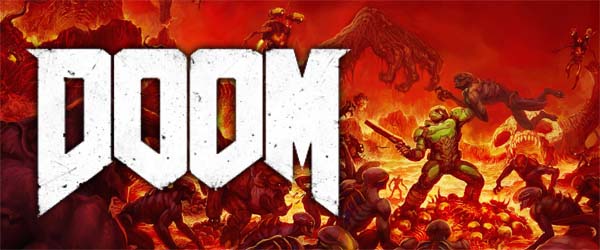
I never played the original Doom. I didn't get into PC gaming until the mid twenty-aughts, and even then didn't play much in the way of first person shooters that weren't the first two Call of Duty games. I was always more into SimCity and Civilization. So I was in no rush to play 2016's reboot of Doom, nor can I really look at it from the perspective of how it holds up against the original's legacy. I heard a lot of good things about it, and picked it up on this year's Steam summer sale.
Bethesda recently announced a sequel, so I thought I'd check this one out to find out if I should be excited.
I miss the good ol' days of game demos being available before a game releases.
I actually did play the free demo on the PSN months ago, which was an option for me because the game's been out for two years already (does this count as a retro review?). I miss the days when free demos were available before a game's release, so we could try it before we buy it. Sigh. Anyway, I had a lot of trouble with hitting enemies with a PS4 controller considering how fast and movement-oriented the combat is, but I definitely saw the potential enjoyment that I could have with the finer control of a mouse. So I went ahead with the Steam purchase.
Punch a demon in the face
Doom breaks from the cover-based mold set by most recent big budget first-person shooters by encouraging very fast, very frenetic, very aggressive, and very in-your-face action in a fashion similar to Bloodborne. Staggering an enemy allows you to perform a melee "Glory Kill" that provides you with a shower of health pick-ups and ammo. When your health is critical, the best course of action usually isn't to run away and take cover (like in so many modern cover-based shooters); rather, the ideal strategy is often to find the biggest, meanest demon, shotgun it in the face, and then rip its head off with your own bare hands. This keeps the player in the action, and mostly removes the need to backtrack through a level to find health kits and powerups. It's not quite as tactical or thoughtful as the dismemberment system from Dead Space, and some might argue that it's derivative of the chainsaw from Gears of War, but it does help to create a definite flow to the combat that helps it to stand out from other shooters of the era.
Charging an enemy is often the best way to restore your health.
The default move speed is faster than the sprint of most other modern shooter games. You can press 'Shift' to toggle a "walk" mode, but I honestly don't know why you would ever want to, and I never once used it after experimenting with the controls at the start of the game. Most enemies also charge at you with melee attacks or have actual projectile attacks (as opposed to hit-scan weapons). You don't avoid damage by ducking behind cover; instead, you can usually just side-step an incoming projectile or attack. Again, because of the fast speed of the character, the term "side-step" isn't really apt; it's more like a "side-sprint".
This all creates a very retro feel that [I assume] faithfully captures the spirit and fluidity of the original game's combat. It's an experience more akin to a first-person bullet hell game rather than the cover-based, whack-a-mole shooting galleries that define most modern shooters. [More]
2028a05f-7ac8-4aa6-83e8-785b11e76705|0|.0
Tags:Doom, Id Software, shooter, first person shooter, Hell, demons, occult, Mars, science fiction, horror, action
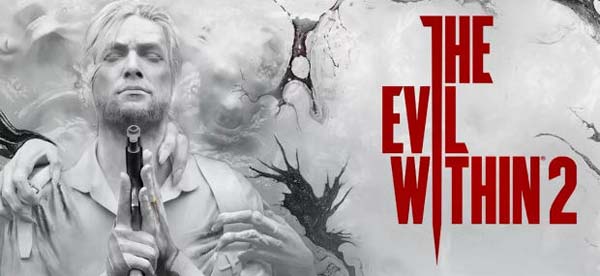
Okay, I said I would give up on Shinji Mikami after the first Evil Within game, but here I am giving that IP a second chance. I had heard that the expansions for Evil Within were actually pretty good, and that they even made the base game better by filling in some of the narrative gaps. But I was so furious with the base game that I sure as hell was not going to shell out more money for DLCs. If they were that integral to the core game, then they should have been included with the core game. Now that my furor over the original has faded a bit, I was hearing that the sequel is also much better than the original game and leans more heavily in the horror camp than the action shooter camp. I was dismissive of the game's announcement, and I was skeptical of the claims that the sequel was actually good, so I picked up a [relatively] cheap used copy off eBay so that I could give it a chance over the Halloween week without necessarily giving any more money to Bethesda.
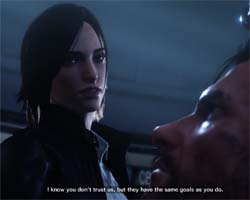
I feel like I missed something...
Maybe I should've played the DLC?
Besides, Shinji Mikami isn't the director this time around. Instead the sequel is directed by John Johanas, who was the director of the [supposedly] good DLC expansion packs. The first game actually did have some good ideas and set pieces within, so maybe a different directorial approach could bring those ideas out to their full potential?
A more focused package
To Johanas' credit, the game, as a whole, definitely has a more "unified" presentation. The first game felt very scattershot with regard to how it wanted the player to play. It's early chapters (which were also the most enjoyable parts of the game) were focused mostly on stealth, with a few pursuit and escape moments thrown in. It was slow, somewhat atmospheric, and built incredible tension. But those mechanics were quickly dropped in favor of shooting gallery set pieces, constant scripted ambushes, set piece boss encounters, and frantic, funhouse-ish trap / puzzle rooms. The sequel, thankfully, is much more focused. I didn't feel like I was wasting my resources by putting points into Sebastian's stealth skills (a skill tree that was completely absent from the previous game), as you can actually continue to use them over the course of the entire game. Sure, there's still scripted ambushes and puzzle rooms, but the focus is much more firmly planted in sneaking around, exploring the environments, and generally avoiding detection.
Unfortunately, there's still a bit too much of a focus on frenzied action. It detracts significantly from any sort of horror or tension that the game might be trying to build up. The autosaves are fairly generous (even though there are also manual save points in each of the game's safe houses), so enemies come in hordes, hit very hard, and deaths are going to happen. Chapter 3 basically completely desensitized me to death and put me in the habit of just standing up and letting the monsters kill me if I ever screwed up the stealth.
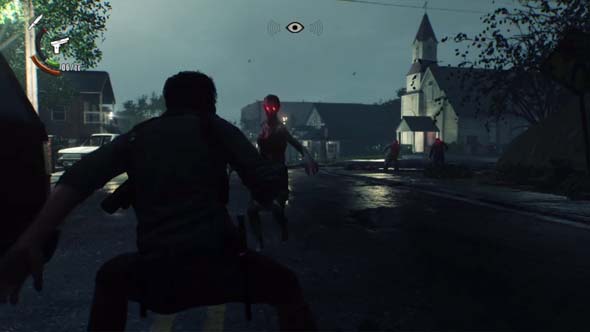
The early combat encounters are not gentle, as they put you up against hordes of enemies.
There's a greater focus on open-ended exploration this time around, and Chapter 3 is the first open map that the player is free to explore. There's basically two main paths through it: the hard one and the easy one. The easy path is basically a straight line due north from where you start, but the game throws some curveball objectives at you that basically encourage you to try the other paths that end up being much harder. You're told about weapon caches and NPCs that you're supposed to try to save. One such weapon is the crossbow, which is actually a pretty necessary tool (because, you know, every game has to have a crossbow). It's right off to the side of where you start, but picking it up can easily lead you down a much harder path to your actual mission objective... [More]
a80e28ec-25a4-48ed-8bdc-50264cab70ac|1|4.0
Tags:The Evil Within, The Evil Within 2, Bethesda, Tango Gameworks, survival horror, horror, action, shooter, open world, sandbox, stealth, zombies, mental institution, virtual reality, psychopath, Sebastian Castellanos, eBay, John Johanas, Shinji Mikami, Resident Evil, Silent Hill
|

| 12 | | | | | | | 60 | | 11 | | | | | | | 55 | | 10 | | | | | | | 50 | | 09 | | | | | | | 45 | | 08 | | | | | | | 40 | | 07 | | | | | | | 35 | | 06 | | | | | | | 30 | | 05 | | | | | | | 25 | | 04 | | | | | | | 20 | | 03 | | | | | | | 15 | | 02 | | | | | | | 10 | | 01 | | | | | | | 05 |
|